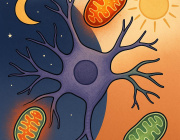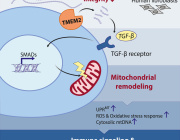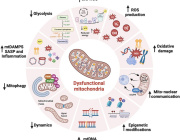New Method Improves Delivery of Healthy Mitochondria To Cells Where It Is Dysfunctional, Study Shows

South Korean researchers have developed a simple way to deliver healthy mitochondria to cells where it is dysfunctional, rescuing the cells’ energy levels and metabolic function.
The study, “Delivery of exogenous mitochondria via centrifugation enhances cellular metabolic function,” was published in the journal Scientific Reports.
Defects in mitochondria, the small organelles that are the cell’s powerhouses, contribute to several health problems, including aging, cancer, metabolic disorders and neurodegenerative diseases.
Scientists have developed therapies aimed at rescuing mitochondria’s function. But they are limited to cases where a gene mutation underlies the defects.
Researchers have begun exploring a new strategy — replacing damaged mitochondria with healthy ones.
But a problem scientists have faced is that “mitochondrial transfer methods are inefficient and time-consuming,” the South Korean researchers wrote.
They came up with a new way to deliver healthy mitochondria. The first step is to mix healthy mitochondria with the cells where they need to go. The next step is spinning the mixture — a process called centrifugation — to combine the mitochondria and cells.
The team spun a mixture of mitochondria from human umbilical cord-derived mesenchymal stem cells and cells that needed healthy mitochondria.
They tried the process with more than one type of cell. One experiment involved mixing mitochondria with the same human cells that had donated the mitochondria. Another was mixing human mitochondria with rat muscle cells.
An important finding was that human mitochondria ended up in the rat muscle cells, but rat mitochondria did not increase in the muscle cells. This meant that mitochondria from outside the muscle cells was being successful delivered inside the cells.
When the team compared the efficiency of its mitochondria delivery method with a method called passive transfer, they discovered that their method was much more effective.
“The results from centrifugal transfer indicate that mitochondria can pass through the cell membrane more easily than using the passive transfer approach,” they wrote.
The team maintained the higher efficiency level when they used three other types of cells, including stem cells and cancer cells.
The key finding was that the transferred mitochondria were able to restore lost mitochondrial function, including generating energy and the reactive oxygen species that take part in metabolism.
“This simple and rapid mitochondrial transfer method can be used to treat mitochondrial dysfunction-related diseases,” the team concluded.
News source: https://mitochondrialdiseasenews.com
Photo credit: mitochondrialdiseasenews






























































